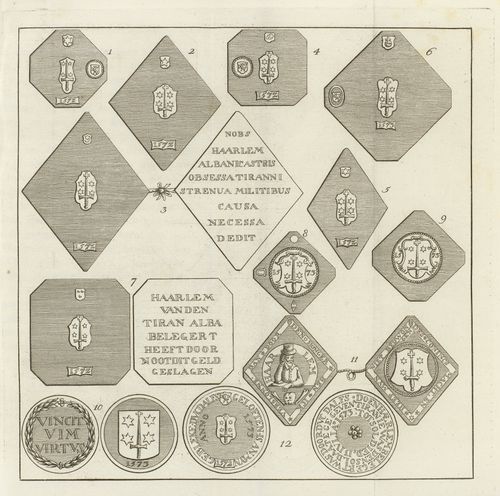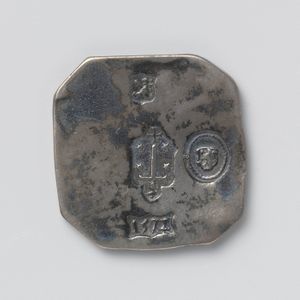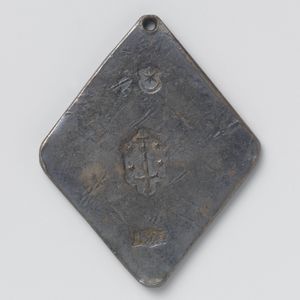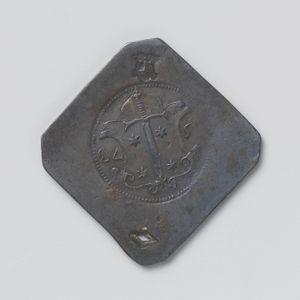Ciska Swaak/MOFF
Contents
MUSEUM OF FANTASTIC FORGERIES
THEME
Fantastic Forgeries presents alternate histories of Dutch material culture through the research and evaluation of existing artefacts – and their appropriation, transformation and remaking. Fantastic Forgeries uses historical crafted objects as a departure point to reflect on the status and practice of craft in our contemporary society. The objects will be used as tools to examine traditional ways of making as well as a formal, tactile, and decorative inspiration to compare when stretching the boundaries of (artisanal/digital) fabrication.
In this quarter you will explore into the rich past of Dutch material culture though the Applied Arts and Design collection of the museum Boijmans van Beuningen, or pre-industrial collections of your choosing. You will choose an artefact that speaks to you through its form, function, and its surrounding folklore. You will experiment with various and scanning, modelling and production technologies in order to support the crafting of your own perfect copy of your chosen piece. The idea is to make your replica or 'fake' as convincing as possible by reproducing with detail, before breaking it open into a series of iterations that alter the form and content of the artefact. Can new rituals come about by removing the form out of its original context? Can more flamboyant objects arise by imagining and inventing the aristocrats that would use them?
DELIVERABLES
- A copy of your chosen (pre-industrial) artefact crafted from a different medium;
- A well-fabricated contemporary transformations based on your chosen artefact;
- A polished project wiki page;
- A 1000 word statement defining your position of what where your specific 'craft' lies in relation newer technologies (Uploaded to the wiki);
- An exhibition presentation, research visualisation, and oral presentation.
CRITERIA
- The student is knowledgeable of the historical context of their project's themes, and has positioned/critically reflected upon new contexts in relation to the minor (i.e. craft, fabrication, authorship, appropriation, experimentation and relation to personal practice/signature).
- The student has defined a clear, profound, and independent method of research, which is visible in the design/artistic process.
- The student has a rigorous approach to experimentation, which is visually presented as a coherent process.
- The student has conceptualized and executed high-level, innovative, and original works.
- The student has taken advantage of the technical instruction and technologies/tools offered, and has demonstrated a willingness to push their skills further.
- The student has a motivated choice and proper defence for a specific a technology in their execution of their final assignment.
WRITTEN ASSIGNMENT
- +/- 1000 words answering #5. Please use 1-4 to jump start your writing process.
- What is your craft? (define your discipline, method or approach)
- What are the tools and media of your craft?
- What are the borders of this practice? (what new media technologies have arisen / what is its future of the field))
- Connect to a historical discourse and give concrete examples of contemporary practitioners
- Define your position of your practice in relation to newer technologies.
MUSEUM OBJECT
I went to the Rijksmuseum in Amsterdam. One of the most interesting artifact that i found were the 'Noodmunten' (emergency coins, Notgeld).
They are made from melted silver chandeliers, lamps, barrels and other objects. And look like pieces of rest materials. That have no value at all.
Interesting part is the Value of the coins. We pay digital without seeing the money.
NOTGELD
BELEG VAN HAARLEM / TACHTIGJARIGE OORLOG
Noodmunten geslagen tijdens het beleg van Haarlem, 1572-1573
NG-VG-4-47.jpg Materiaal: zilver Techniek: slaan Afmetingen: h 2,9 cm × b 2,8 cm × g 14,67 gr
NG-VG-4-50-A.jpg Noodmunt van halve daalder van Beleg van Haarlem eenzijdige, ruitvormige noodmunt met afgeschuinde hoeken. Voorzijde: drie stempels boven elkaar, en een rechts daarvan; van onder naar boven: meesterteken: lelie; stadswapen: omgekeerd zwaard met aan weerszijde twee sterren, op punt van zwaard een kruis; jaartal; rechts een klop: leeuw op schild. Keerzijde: blanco Vervaardiger: anoniem Plaats vervaardiging: HaarlemRM0001.THESAU.3566 Datering: 21-dec-1572 - 7-feb-1573 Materiaal: zilver Techniek: slaan Afmetingen: h 3,4 cm × b 3,4 cm × g 14,47 gr Wat: Tachtigjarige Oorlog Beleg van Haarlem Wanneer: 1572-12-11 - 1573-07-13 Waar: Haarlem
RESEARCH
GESCHIEDENIS NOODGELD
VEILIGHEIDSPAPIER
Veiligheidspapier is papier met veiligheidsaspecten erin verwerkt waardoor deze moeilijk na te maken is. Het papier voor bankbiljetten en voor paspoorten zijn hier voorbeelden van.
De kenmerken van het papier.
- Voor de productie van veiligheidspapier worden speciale celstoffen gebruikt. Deze samenstelling wordt geheimgehouden, maar er is bekend dat voor bankbiljetten veel gebruik wordt gemaakt van een speciale katoensoort met lange vezels. Daarnaast worden ook kunststofvezels gebruikt.
- Het papiergeld geeft een bepaald gevoel in de vingers, waardoor men alleen al aan het voelen aan het papiergeld echt van vals kan onderscheiden. Papiergeld heeft ook een specifieke klank als je ertegen aantikt.
1
I engraved Silicone and clays molds
2
Paper first experiment
3
Research Watermark Unique




